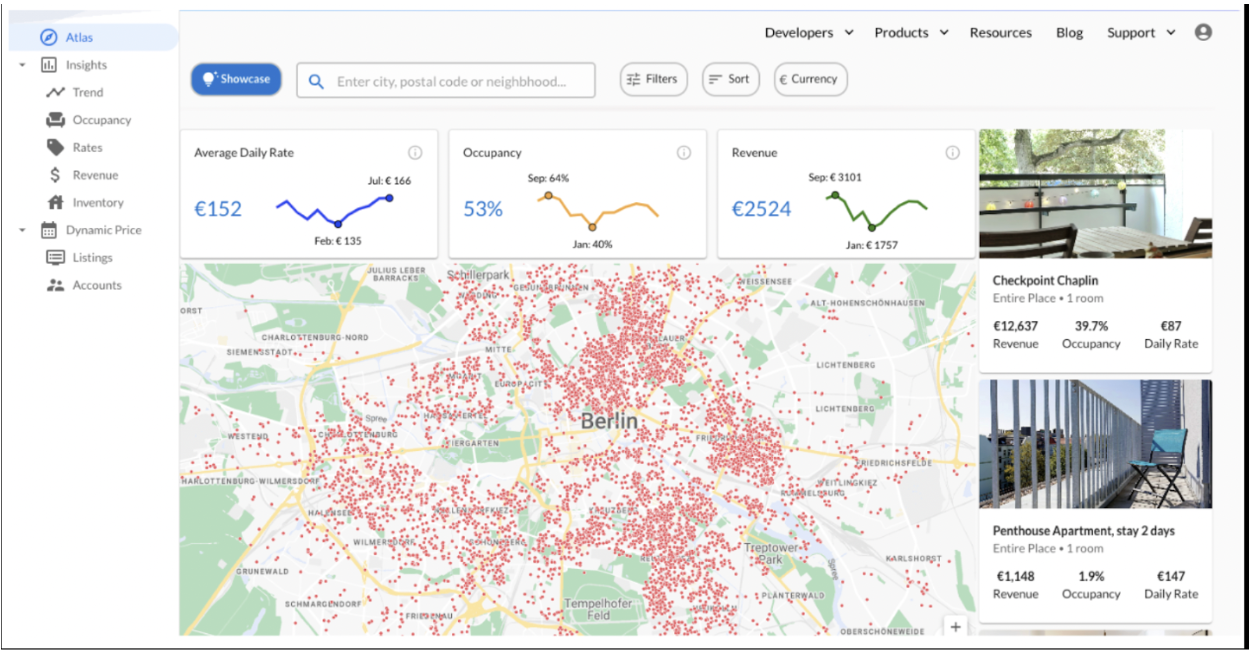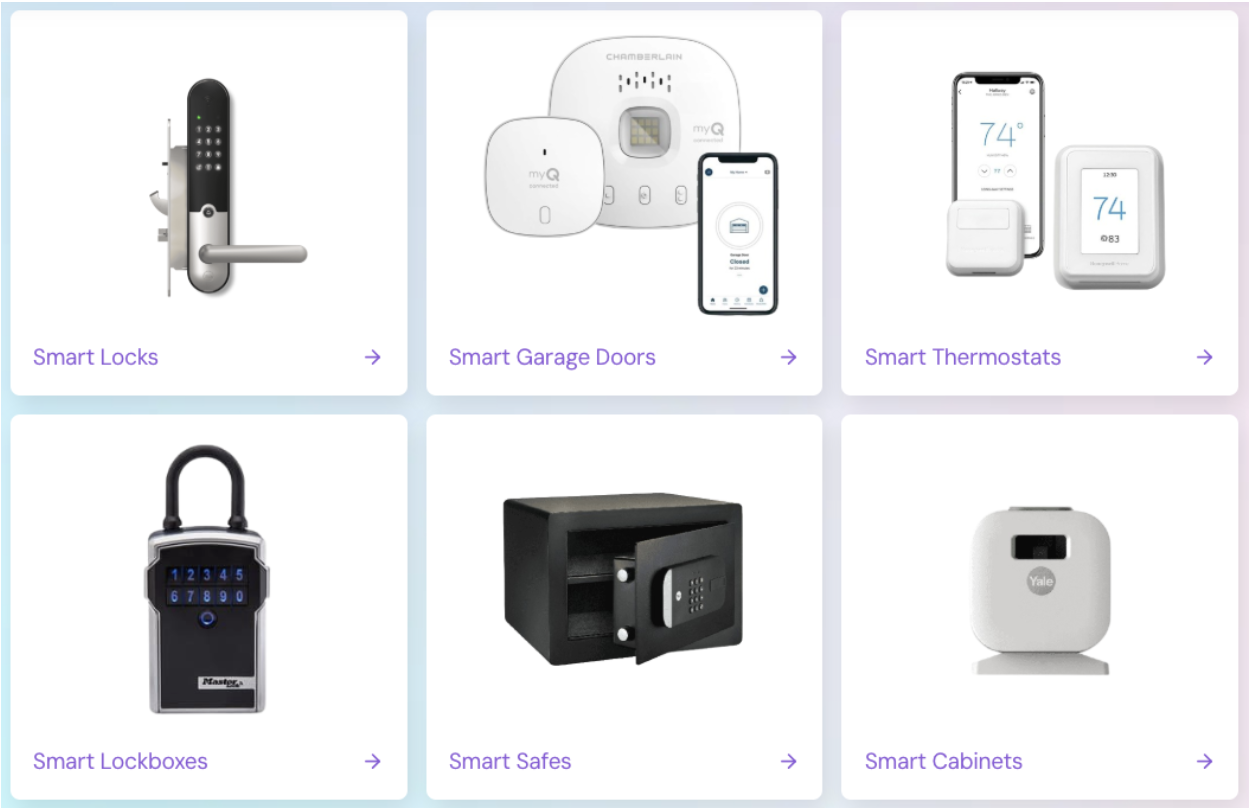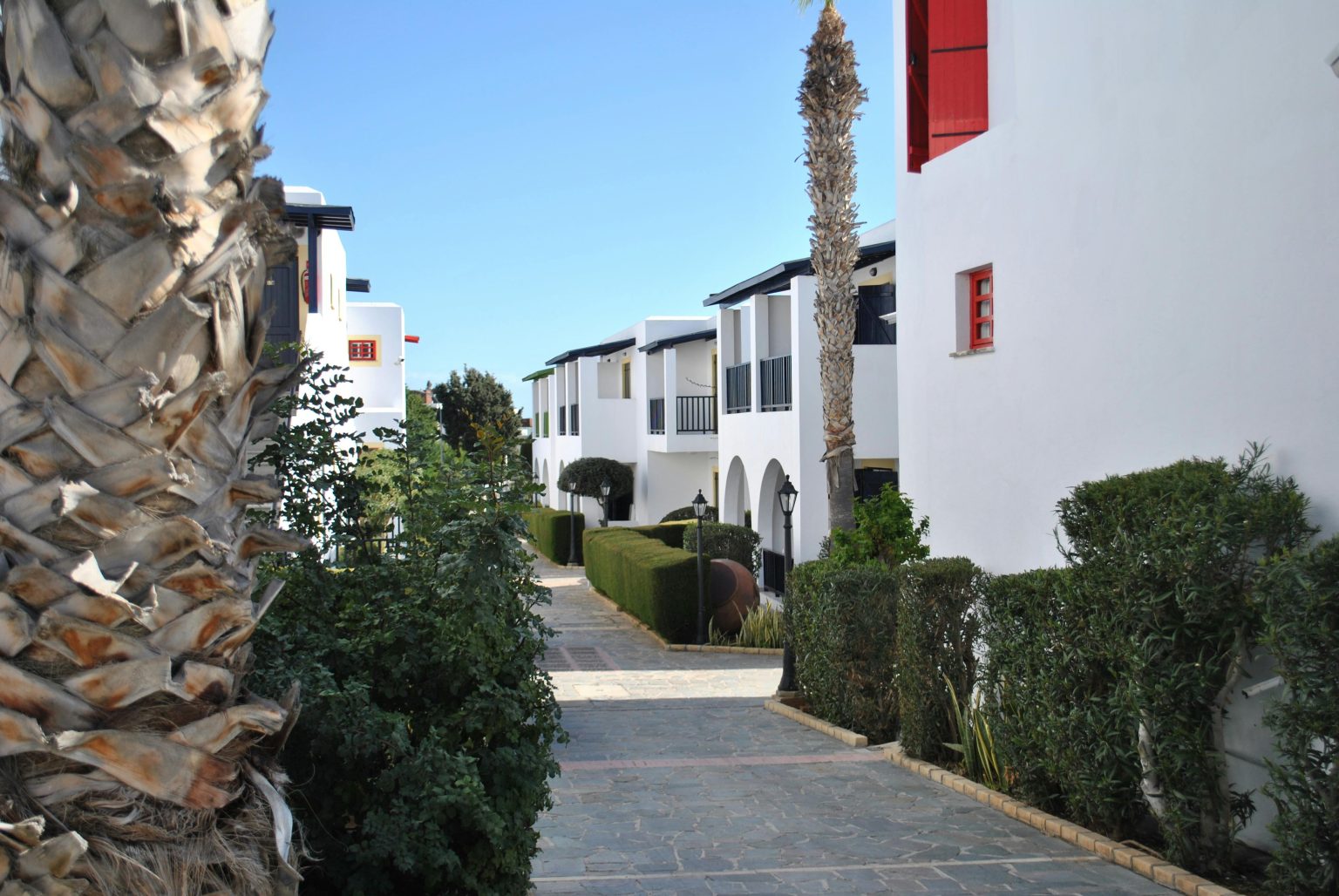If your property’s in the right location, corporate housing can be a great way to boost your income. But it’s not always easy to tell whether you’ll get a decent return on your investment and hard work.
Plus, figuring out corporate housing prices can be challenging. Rates depend on a mix of factors like demand, amenities, and local regulations.
Looking at market trends can tell you how much you can charge. You can see how much income you’re likely to generate, spot and avoid common pricing mistakes others have made, and understand how to make the most of your properties.
So come with us for a quick look at the current costs of corporate housing. We give you a breakdown of the average rates across popular locations, the factors that affect them, and how to set your own prices.
The cost of corporate housing: A quick glimpse at rates
Corporate housing prices vary dramatically across locations. It ranges from as low as $110 in Calgary to as high as $696 in New York, according to Dwellworks’ latest industry reports.
If you’re keen for a ballpark figure, the average daily rate (ADR) based on data from across North America and EMEA is $244.
If you currently operate a long-term rental, these daily rates may seem like a significant increase. But those managing holiday homes may find them less impressive. Just bear in mind that corporate occupancy rates are also higher throughout the year, which usually leads to higher overall profits.
Additionally, keep in mind that corporate lease agreements are typically all-inclusive. While you can charge higher costs, you must put some of your extra income toward cleaning, laundry, and other essentials.

Key factors that influence corporate housing prices for hosts
Your pricing strategy depends on what works for your unique setup. However, understanding which factors affect rates can help you find the optimal amount and drive bookings.
Location
Demand for corporate housing follows a different pattern from long and short-term rentals. Major cities tend to see the most demand because they’re close to business centers. That’s what is going to attract the most corporate travelers, temporary workers, and digital nomads.
But your property doesn’t need to be downtown to perform well. Furnished apartments near hospitals, manufacturing plants, and transport hubs can also see high demand even if they’re not in urban areas.
The key is to research your area before you commit to a plan. Look on listing sites like Furnished Finder to see how many corporate units are already nearby and what they’re charging.
Property size
As you might expect, bigger properties usually come with higher prices. More square footage, additional bedrooms, and large workspaces all add value for potential guests and increase how much you can charge.
For example, a three-bedroom in San Francisco typically goes for twice as much as a one-bedroom.
But neither size nor the number of bedrooms is enough to justify raising rates. You must also ensure you can provide a comfortable and self-contained space where all your guests can relax. Nobody cares if they’ve got the largest room in your corporate apartment if they’re too cold or constantly disturbed by the neighbor’s music.
Length of stay
The longer the contract, the more you make from the booking. Corporate travelers tend to need an extended stay, so you can benefit just from making several large deals in the year.
But most corporate hosts offer small discounts for longer stays to incentivize bookings. Clients may expect to negotiate the lease terms and look elsewhere if you don’t. While this shouldn’t significantly affect your income, it’s worth bearing in mind as you evaluate costs.
Amenities & services
Many corporate travelers are willing to pay a little extra for fully-furnished apartments and high-end service. They’re used to staying in hotel rooms, so they’ll expect that level of comfort and luxury.
Of course, this means you’ll have to optimize your property for business clients. This involves providing:
- Reliable, high-speed internet
- Work stations
- Laundry services
- A fully stocked kitchen
- Linens
- On-site parking
Add more value to your property by offering extra services. You can provide airport pick-up, regular cleaning, or fitness center memberships depending on guest needs.
Also, consider installing smart devices to give renters more control over the space and help them feel more comfortable. Hostfully has a range that you can choose from, including smart locks, thermostats, and safes.

Seasonality
One of the biggest pros of corporate housing is that they’re less affected by seasonal peaks compared to short-term rentals. Businesses operate all year round except for major holidays.
That said, you may see bookings drop a little in the warmer months if it’s the custom to take an extended break. Some regions even close their offices altogether. You can always try to encourage reservations by lowering prices or taking a few shorter reservations from vacationers.
Corporate housing pricing based on key benchmarks
Before you set your rates, it helps to get a sense of what’s typical for your area. The table here shows the ADR across major cities worldwide:
| City | One bedroom | Two bedroom | Three bedroom |
| New York | $309 | $475 | $696 |
| San Francisco | $266 | $283 | $332 |
| London | $193 | $274 | $306 |
| Paris | $230 | $336 | $636 |
| Munich | $177 | $220 | $290 |
| Dubai | $127 | $191 | $253 |
Corporate housing vs. vacation rentals: A cost comparison
At first glance, the rates for Airbnbs look higher than for corporate housing. The ADR for vacation homes is around $310.84 — about 50% more.
But these numbers don’t tell the whole story. Vacation homes tend to have lower occupancy rates than other rental models due to seasonality and zoning laws. Some businesses only accept guests for a few months out of the year.
There are also cost savings to consider. Corporate guests stay for longer, take better care of your properties than tourists, and report any issues promptly, as they know their conduct reflects on their employer. This means less cleaning and repairs, leading to lower overall turnover costs.
5 quick tips on how to set corporate housing prices
Setting prices doesn’t have to be a guessing game. Here are some strategies you can use to find the optimal rates for corporate housing and attract high-quality bookings:
- Do your research: Compare prices for similar businesses in your area to understand what you can charge for a property with your location, square footage, and number of rooms. You should also consider other value-adds, like proximity to public transport or the view from the rooms.
- Factor in the total costs: Consider which amenities and services you want to offer, and incorporate these costs into your nightly rate to ensure you remain profitable. You must ensure you cover all expenses with some leeway for a sustainable business model.
- Use dynamic pricing tools: Market demand changes quickly, and if you’re behind, you end up setting the wrong rates. Dynamic pricing tools can automatically monitor trends and calculate the optimal prices to drive bookings.
- Offer flexible terms: Business travel doesn’t always have a defined start and end date. Charging extra to let visitors extend check-out keeps guests satisfied and improves your margins.
- Review and adjust: Prices that worked in 2024 may not make financial sense in 2025 and beyond. Revisit your rates every few months to track performance, check your profits, and benchmark against competitors.
But what about setting discounts? Lodgeur founder and CEO, Sébastien Long says, “A rule of thumb for the appropriate discount is one minus your occupancy rate. For example, if you average 75% occupancy, then apply a 25% discount to monthly stays.”
Corporate housing pricing trends for 2025 and beyond
According to the latest CHBA report, corporate housing growth is uneven. Demand is driven more by sectors such as healthcare, technology, and biotech than by location. But that’s hardly a surprise when these types of companies often send workers on assignments, creating more need for temporary housing solutions.
Prices are generally increasing, though. The pace differs across cities and property types, but there’s a definite upward trend.
Silicon Valley, for example, is experiencing a lot of growth due to tech expansion and seasonal demand. By contrast, Los Angeles and San Francisco have seen a shallower incline because of their high cost of living.
Be aware that local events can have a significant effect on trends. Some French cities have seen a spike as the 2026 Olympics approach and people rush to book accommodation. You can expect a similar impact anywhere there are major international conferences, awards ceremonies, and development projects.
Long agrees saying, “Every micro-market is different. Sometimes you’re competing with other short-term rental operators, and other times it’s extended stay hotels or traditional corporate housing companies.”
But he adds: “The quality of your product and service is the antidote to that. We compete against some corporate housing companies operating in the same building, and yet we achieve rates that can be 10-20% higher.”
How Hostfully helps you manage corporate housing
Setting the right rates for corporate housing is only the start. You must deliver a great experience to justify the costs and attract repeat bookings year after year.
Hostfully PMS gives you everything you need to automate key operations and keep everything running smoothly. Some of our key features are:
- Centralized calendar management to prevent double bookings
- Smart locks for easy access on arrival
- Task management for those complementary cleaning services
- Message templates with fields and triggers for personalized communication
- Digital guidebooks to introduce guests to the area
- Data analytics to track performance and keep making improvements
Don’t get us wrong! Rates are important, but make sure you can build a business that runs smoothly, keeps guests satisfied, and keeps operational costs low.
FAQs about corporate housing pricing
What is the average cost of corporate housing per night in major cities?
The average daily rate (ADR) for corporate housing is about $244 per night, with costs ranging from $110 in smaller markets to nearly $700 in global hubs like New York or London.
How do amenities influence corporate housing pricing?
Amenities like housekeeping and parking spots let you charge higher rates. But there must be a genuine demand for them, or guests will be unwilling to pay extra.
Is corporate housing more profitable than traditional rentals?
Yes, corporate housing tends to be more profitable than traditional rentals. While you still benefit from all-year-round occupancy, you can usually charge higher rates than standard tenancy contracts.
How can I adjust my corporate housing rates based on market demand?
You can adjust corporate housing rates based on market demand by researching similar businesses and setting competitive rates. Dynamic pricing tools calculate this automatically and integrate with your PMS to apply amounts.



